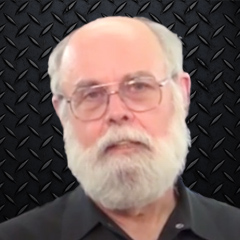
Understanding Cam Specs: Part 3
Bruce TessmerDescription
In the first video, we covered the role of the camshaft in a four-cycle engine and how it works. In the second video, we discussed the “big three.” The three most important specifications to consider when selecting a S&S Cycle cam for a specific engine and application are lift, duration, and intake closing time.
TDC Lift
Top dead center lift or TDC lift is very common on cam spec charts. When the piston is at TDC, between exhaust and intake strokes, both valves are open. The TDC lift specification tells us how far each valve is open in thousands of an inch. TDC lift is important because there is the possibility of the piston and valves coming into contact at TDC, and that is never a good thing.
If the piston hits a valve at TDC, it will very likely bend the valve. Damage can be extensive as well as expensive.
Lobe Centerline & Lobe Separation Angles
Lobe centerline angle and lobe separation angle are two somewhat less common specifications that sometimes appear in cam spec charts. For the intake valve, the lobe centerline angle is defined as the degrees of crank rotation between top dead center on the intake stroke and the point when the intake valve reaches its maximum lift. It is expressed in degrees after top dead center.
Exhaust lobe centerline angle is defined as the degrees of crank rotation between the point where the exhaust valve reaches maximum lift and TDC on the exhaust stroke. Exhaust lobe centerline is expressed in degrees before top dead center.
Lobe Separation Angle
Knowing the intake and exhaust center line angles allows us to calculate the lope separation angle which is defined as 1/2 the number of degrees of crankshaft rotation between maximum exhaust lift and maximum intake lift.
Lobe separation angle is important because it affects the amount of overlap a cam will produce. A cam grind with a wider lobe separation angle will produce less overlap. This results in better low rpm performance and smoother idle at the expense of high RPM performance. Cams with narrower lopes separation angles create more valve overlap. This results in more high RPM power but a rougher idle and less power and torque at low rpm.
Lobe separation angle may be helpful when choosing between two likely cam grinds, but in reality, the duration and timing numbers will probably have already told you what you need to know.
Missed Understanding Cam Specs: Part 1 – it’s here.
Understanding Cam Specs: Part 2 Here.
Watch Multi Hour Upgrade Projects Here on Fix My Hog:
Cam Upgrade and Tensioner Upgrade
Cam Upgrade and Gear Driven Cam
M8 Cam Upgrade
Thank you to S&S Cycle for sharing these videos with us.
Premium Membership
Unlock exclusive member content from our industry experts.
- 24/7 Access to Premium Instructional Videos, Projects, and Tips
- Step-by-Step Guides and Demonstrations
- 50% Discount on Video Downloads in the Fix My Hog Shop
- Access to Ask the Expert Program
Unlock exclusive member content from our industry experts.
- 24/7 Access to Premium Instructional Videos, Projects, and Tips
- Step-by-Step Guides and Demonstrations
- 2 Full-Length Video Downloads to Watch Offline
- 50% Discount on Video Downloads in the Fix My Hog Shop
- Access to Ask the Expert Program
Gold Membership
$302 Value
Get everything included in Premium plus exclusive Gold Membership benefits.
- 24/7 Access to Premium Instructional Videos, Projects, and Tips
- Step-by-Step Guides and Demonstrations
- 16 Full-Length Video Downloads to Watch Offline
- Discounts on Purchase-to-Own Content in the Fix My Hog Shop
- Access to Ask the Expert Program
- Exclusive GOLD LIVE Streaming Events
- $8 Off Clymer and Haynes Service Manuals
Share tips, start a discussion or ask one of our experts or other students a question.
Already a member? Sign in
No Responses to “Understanding Cam Specs: Part 3”